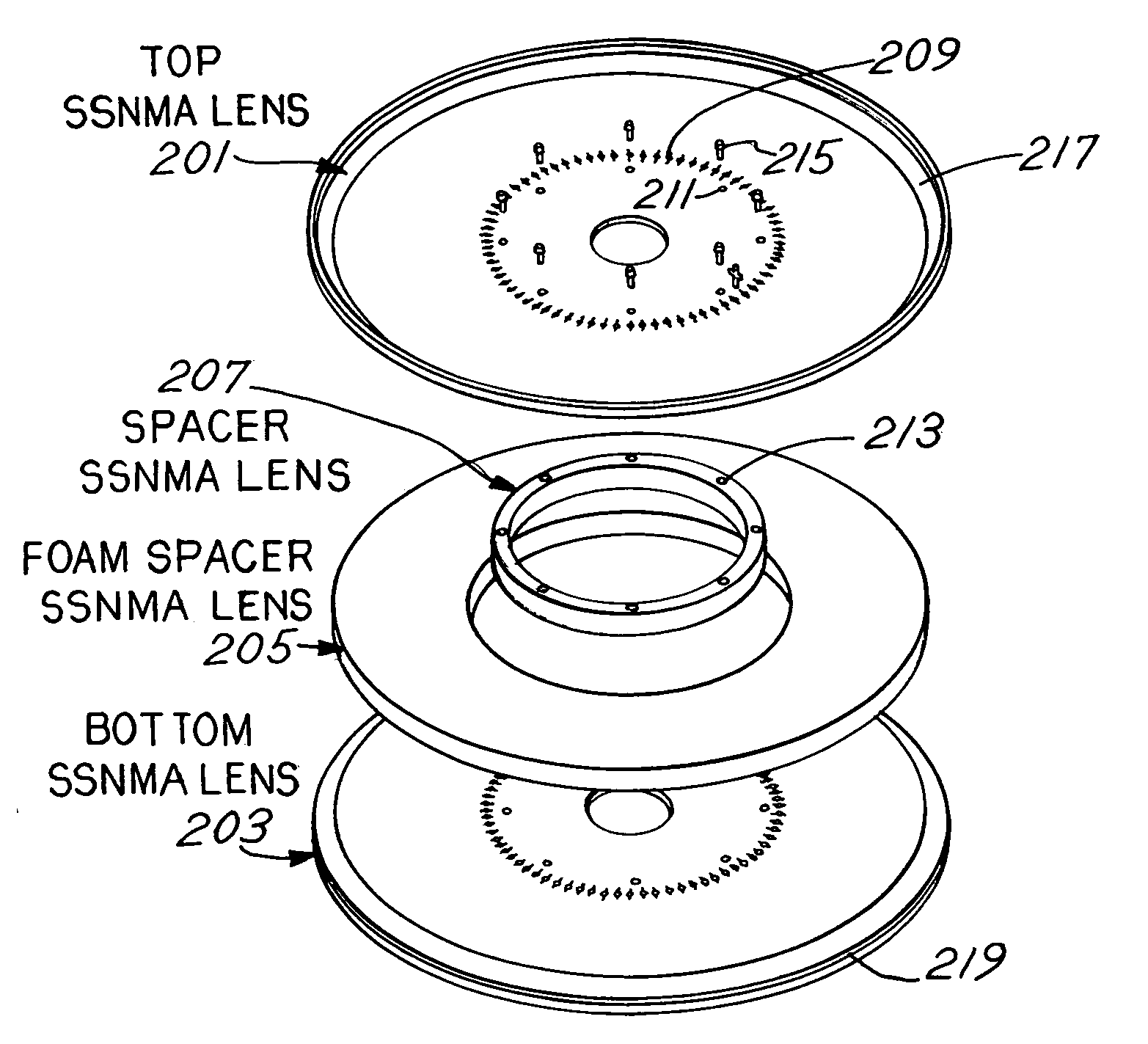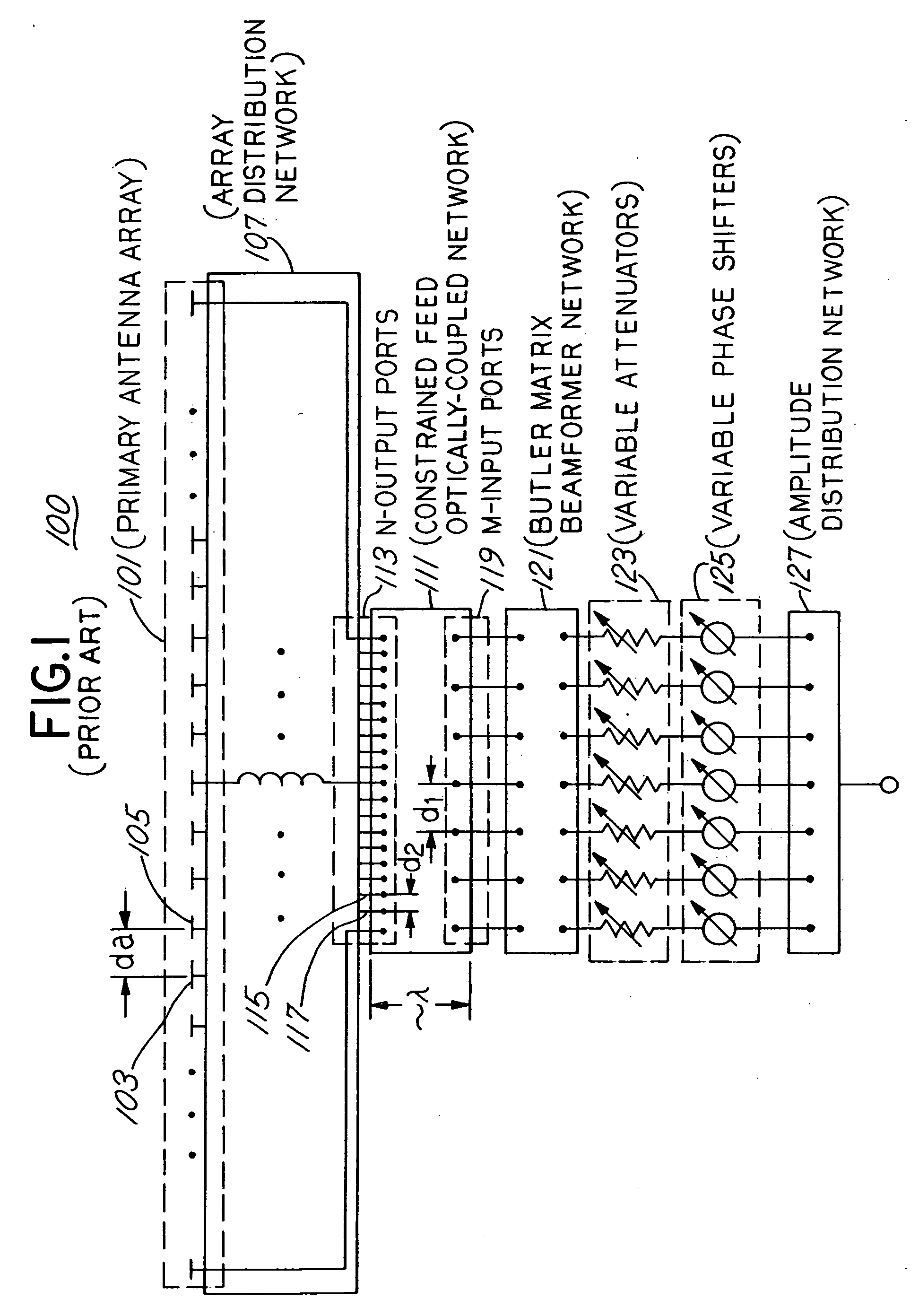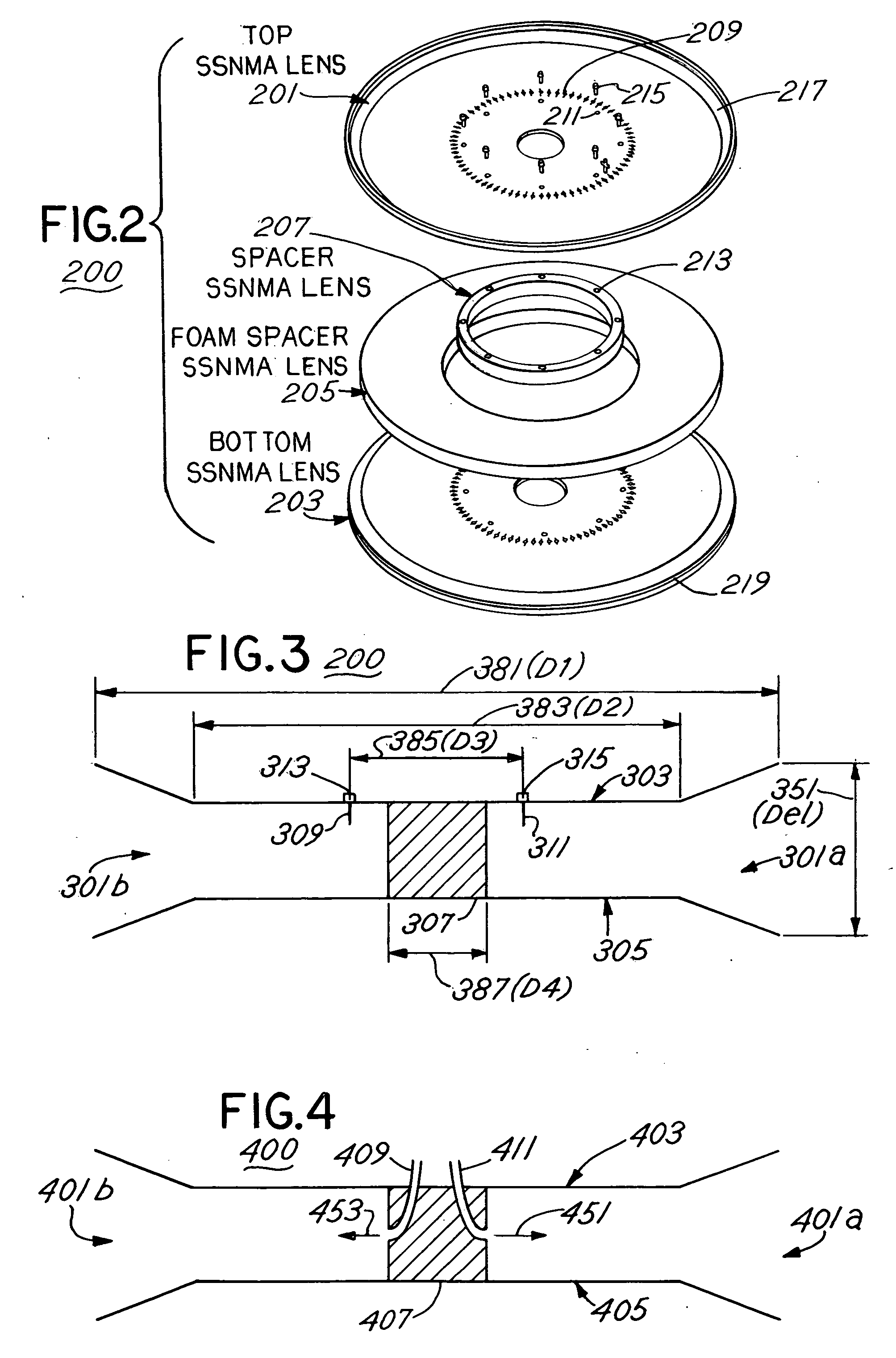Radial constrained lens
a radial constrained lens and aperture technology, applied in the direction of antennas, antenna details, antenna adaptation in movable bodies, etc., can solve the problems of multipath fading and multichannel interference becoming even more crucial issues, and the processing complexity is exponentially increasing
- Summary
- Abstract
- Description
- Claims
- Application Information
AI Technical Summary
Problems solved by technology
Method used
Image
Examples
Embodiment Construction
[0024]FIG. 1 shows scannable antenna system 100 in accordance with prior art as disclosed in U.S. Pat. No. 4,507,662 (“Optically Coupled, Array Antenna”, Rothenberg et al.). Scannable antenna system 100 includes a radiating array of antenna elements 101 that radiates (or receives) electromagnetic energy to an intended direction. Radiating array 101 contains N discrete antenna elements (e.g. antenna elements 103 and 105), where each antenna element is coupled, through equal line lengths, to first feed array 113, which is more closely spaced than radiating array 101. First feed array 113 comprises N feed elements (e.g., feed elements 115 and 117). Second feed array 119 is positioned to first feed array in close proximity, typically no more than a wavelength, through optically-coupled network 111. Second feed array 119 comprises M feed elements and has an inter-element spacing that is typically the same as the spacing between adjacent antenna elements. (M is an integer that is less tha...
PUM
 Login to View More
Login to View More Abstract
Description
Claims
Application Information
 Login to View More
Login to View More - R&D
- Intellectual Property
- Life Sciences
- Materials
- Tech Scout
- Unparalleled Data Quality
- Higher Quality Content
- 60% Fewer Hallucinations
Browse by: Latest US Patents, China's latest patents, Technical Efficacy Thesaurus, Application Domain, Technology Topic, Popular Technical Reports.
© 2025 PatSnap. All rights reserved.Legal|Privacy policy|Modern Slavery Act Transparency Statement|Sitemap|About US| Contact US: help@patsnap.com



